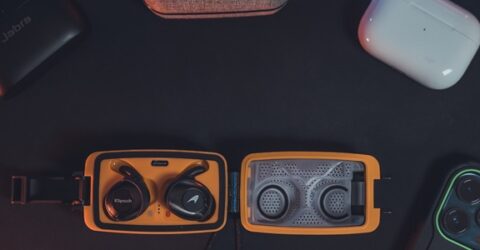How does Bluetooth work?
How does Bluetooth work? The answer is using some decidedly low-tech communications

It’s often surprising how many supposedly modern technologies have been with us since the 20th century.
Alongside obvious examples like Windows and the World Wide Web, you can add natural language search results, peer-to-peer file sharing, broadband – and Bluetooth.
The latter takes its name from a 10th century Danish king, using short-range radio wave transmissions as a bridge between two wireless devices.
Today, there’s near-global adoption of the Bluetooth industry standard, with over 30,000 companies presently holding membership of the Bluetooth Special Interest Group.
Bluetooth helps to reduce the inevitable tangle of wires when cabled devices are stored together, and it also eliminates compatibility issues between sockets, plugs and connectors.
It’s a staple of modern technology, yet many of us would struggle to answer even basic questions about it, such as how does Bluetooth work…
How does Bluetooth work in practice?
We’ve previously explained why the congested 2.4GHz wireless frequency is charged with carrying data from microwave ovens and baby monitors through to car alarms and broadband routers.
To this list we must also add Bluetooth, which relies on the same UHF (ultra-high frequency) radio wave frequencies.
Two devices containing Bluetooth functionality can be paired together by encouraging them to search for other nearby devices with Bluetooth engaged.
It usually involves pairing a fixed device (a car’s infotainment system or desktop PC) with a portable device (a smartphone, wireless headphones), or pairing two portable devices.
The master/slave protocol established by pairing also allows one master device to host up to seven connections with different Bluetooth-equipped devices simultaneously.
Pairing will take place across one of 79 available channels, each harnessing a slightly different frequency between 2.400 and 2.4835GHz.
Once pairing is completed, these devices are able to communicate privately using radio waves, across a distance of up to 33 feet in spaces without obstructions.
(There are more advanced forms of Bluetooth which increase range and signal strength, but these tend not to be used for consumer-facing applications.)
Once a connection is established, it will endure until the range is exceeded, one device is powered off or the connection is deliberately deactivated.
The master device will usually reroute part of its output (most commonly audio) to the paired slave device.
Benefits
Many people rely on Bluetooth to connect wireless headphones to a smartphone, yet the uses of this wire replacement communications protocol extend much further.
Bluetooth may be used to support wireless peripherals like keyboards, mice, games controllers and even printers.
Less common uses include selfie sticks, smart door locks, health sensors, object trackers and even traffic congestion monitoring.
Bluetooth is useful for distributing files between computers and smartphones without cables. Physically plugging an Android phone into a PC might start charging, rather than opening file folders.
Bluetooth only works across short distances because the signals emitted are relatively weak – meaning it requires minimal power to receive and interpret them.
This hugely extends battery life, which is why it tends to be peripherals that benefit from the incorporation of Bluetooth.
Another key benefit of the technology is full backwards compatibility, so historic devices should pair seamlessly with modern ones.
Drawbacks
No technology is infallible, and Bluetooth does have its drawbacks.
Laptops, tablets, smartphones and desktop computers will all be Bluetooth-compatible, but this functionality may not be turned on by default.
Bluetooth drains smartphone batteries, which is why it’s often advisable to turn it off if you’re not planning to pair your phone with peripherals or jump into the car any time soon.
Limited security is offered, which could lead to data being stolen off a device with an active Bluetooth connection – a process rather inelegantly known as bluesnarfing.
For this reason, it’s recommended that Bluetooth is turned off when it’s not in use, especially in public settings or while connected to an insecure WiFi hotspot.
However, the practical benefits and reliability of this globally recognised data distribution technology far outweigh any potential security risks.






